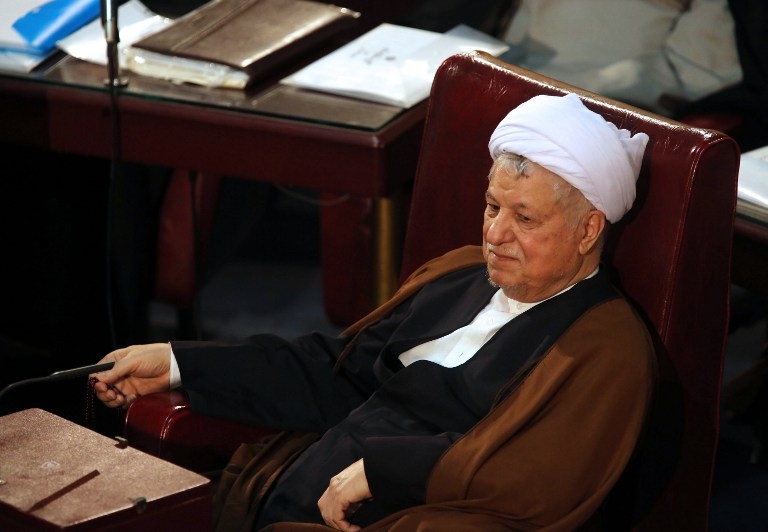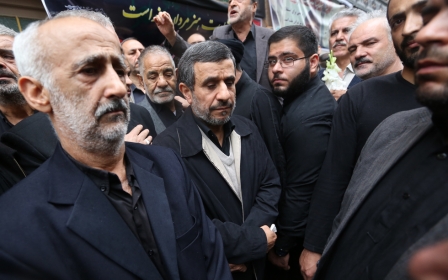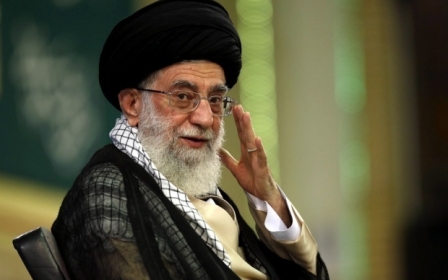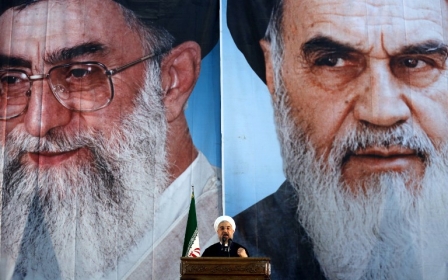Iran's Rafsanjani pushes for new role in power

In February 2016 Iran will hold two key elections which are likely to determine the political trajectory of the country for at least a decade if not a generation.
The simultaneous elections for the Islamic Consultative Assembly (the national parliament) and the Assembly of Experts (the body that elects the leader) have become the focus of an intense struggle between competing centrist/reformist and conservative/hardline factions.
Fully cognisant of the stakes, both camps have mobilised their resources well in advance of the elections to secure majorities in both houses. A win for the centrist/reformist camp will set the stage for a second presidential term for Hassan Rouhani in the 2017 presidential elections.
Arguably the most controversial development in the early campaigning period has been the intervention of former president Ali Akbar Hashemi Rafsanjani. By proposing that the Assembly of Experts could appoint a “council” of leadership as opposed to a single supreme leader (which has been the norm since 1979) Rafsanjani is effectively challenging the very foundation of the Iranian political system.
By placing himself at the centre of the leadership succession debate Rafsanjani hopes to regain lost political ground while apparently confident he can manage the inevitable backlash from the conservatives and the hardliners.
But the ageing oligarch has made costly political mistakes in the past 15 years and this latest incendiary intervention may yet galvanise his opponents to once again try to purge him from the system.
The shark
Hashemi Rafsanjani has been at the centre of Iranian political life for nearly four decades. Dubbed the “shark” by Iranian political pundits for his Machiavellian political skills and remarkable ability to outmanoeuvre his opponents, Rafsanjani doggedly refuses to depart the political arena.
At 81 the ageing oligarch is determined to influence the post-Khamenei era. Whilst five years younger than Rafsanjani, Iran’s Supreme Leader Ayatollah Khamenei does not enjoy Rafsanjani’s relatively good health and is expected to pass away before his former ally.
Khamenei and Rafsanjani share a political heritage that stretches back six decades. Both were ardent supporters of the late Ayatollah Ruhollah Khomeini and played key roles in the Iranian revolution. Today they are the last remaining survivors of Khomeini’s inner circle.
It is this remarkable history that in part explains Rafsanjani’s survival, despite his dramatic fall from grace in July 2009 and the resulting sustained campaign by conservatives and hardliners to oust him from the establishment.
A former parliamentary speaker and president, Rafsanjani was instrumental in securing Khamenei’s ascension to the leadership in June 1989 following the demise of Ayatollah Khomeini.
Rafsanjani’s decline began in earnest when he failed to secure a seat in the elections for the sixth Majlis (parliament) in March 2000. This was followed by his humiliating defeat in the 2005 presidential elections at the hands of hardliner Mahmoud Ahmadinejad.
It was Ahmadinejad’s controversial re-election in June 2009 that propelled Rafsanjani into an oppositional role the following month during a sensational Friday prayers speech in which he appeared to question the election results.
Rafsanjani’s reputation for corruption largely stems from his unwillingness or inability to curtail his family’s wide-ranging economic activities. Earlier this year his most controversial offspring Mehdi Hashemi was jailed for 15 years for a wide array of financial and security crimes.
From an institutional point of view, Rafsanjani is virtually powerless. Although nominally the head of the Expediency Discernment Council and a member of the Assembly of Experts, the former president is in no position to decisively influence any branch of government.
Rafsanjani’s enduring presence on the Iranian political scene is in part a reward for his legacy and a desperate attempt by his supporters to once again propel him into a power-brokering position.
Wither Rafsanjani?
Rafsanjani’s proposal for a council of leadership, in addition to the Assembly of Experts playing a more active role in monitoring the leadership and even disqualifying it on the grounds of poor performance, inevitably attracted strong opposition not only from the conservative establishment but also unusually from the top echelons of the Iranian military.
More broadly Rafsanjani’s latest controversial intervention has once again galvanised hardliners into trying to remove him from the political scene. Hossein Fadai, the secretary-general of the hardline Society of the Devotees of the Islamic Revolution, published an open letter in which he drew a comparison between Rafsanjani and the late Ayatollah Montazeri, and called on Rafsanjani to embrace “revolutionary repentance” to avoid Montazeri’s fate.
The analogy with Montazeri is extremely potent as it draws on the deepest political and emotional dramas of the Iranian revolution. The late Ayatollah Montazeri was the designated successor of the late Ayatollah Khomeini before being publicly humiliated by the latter in early 1989 and removed from office on the grounds of incompetence and unsuitability.
But over the past seven years hardliners and conservatives have repeatedly tried and failed to inflict a humiliating public purge on Rafsanjani. Rafsanjani’s saving grace appears to be his considerable legacy and his enduring, albeit volatile, relationship with Ayatollah Khamenei.
However, if Rouhani loyalists triumph in the Majlis (parliamentary) elections and moreover gain sufficient influence in the Assembly of Experts to be able to dominate proceedings, the hardliners’ parochial project of ousting Rafsanjani will likely be embraced by the power elites of the Islamic Republic, most notably the Islamic Revolutionary Guards Corps (IRGC).
Whilst previous elections for the Assembly of Experts have been lacklustre affairs, the next election is critically important, not least because in view of Ayatollah Khamenei’s failing health the next assembly may have to choose and appoint his successor.
The stakes could not be higher and the IRGC, in tandem with the bulk of Islamic Republic loyalists, will simply not allow centrist or reformist factions to influence the succession process. Rafsanjani may yet experience a painful downfall.
- Mahan Abedin is an analyst of Iranian politics. He is the director of the research group Dysart Consulting.
The views expressed in this article belong to the author and do not necessarily reflect the editorial policy of Middle East Eye.
Photo: Former Iranian president Akbar Hashemi Rafsanjani attends a meeting of Iran's Assembly of Experts in Tehran on 5 March, 2013 (AFP).
New MEE newsletter: Jerusalem Dispatch
Sign up to get the latest insights and analysis on Israel-Palestine, alongside Turkey Unpacked and other MEE newsletters
Middle East Eye delivers independent and unrivalled coverage and analysis of the Middle East, North Africa and beyond. To learn more about republishing this content and the associated fees, please fill out this form. More about MEE can be found here.





